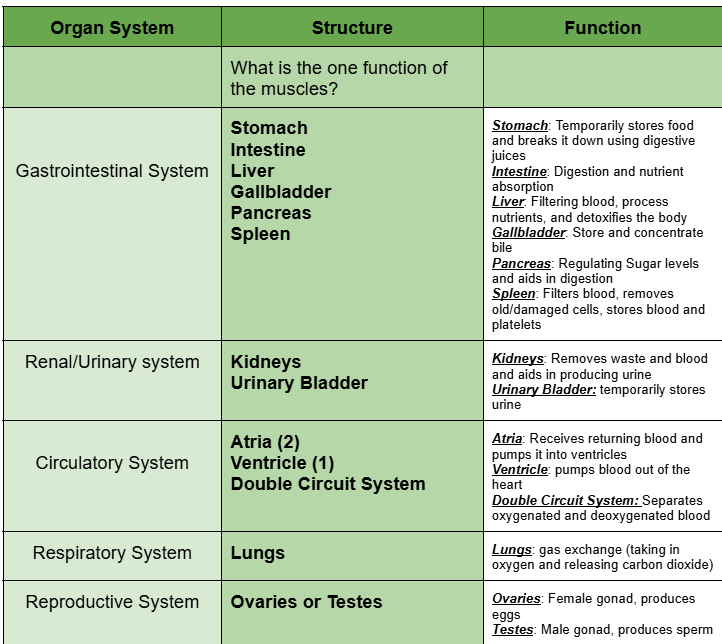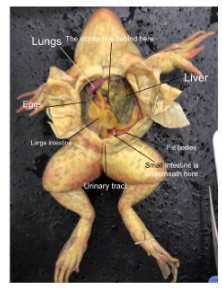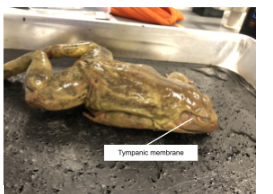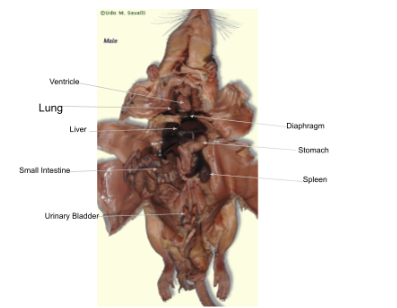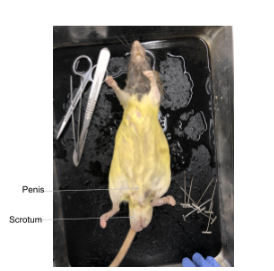Lab Practical Two
Lab 8: Vascular and Nonvascular plants
Plant phylogenetic tree
Algal Ancestors
Relied on water to disperse gametes
Limited to aquatic habitats
Non Vascular (Ex: mosses)
Terrestrial habitat invasion (can now go on land)
Still relies on water to disperse gametes
Seedless Vascular plants (ex: ferns)
Vascular system (they can grow taller)
Xylem and phloem
Still dependent on water to disperse e gametes
Gymnosperms (ex: conifers)
Have seeds and pollen grains
Gametes dispersed by wind
Really large heights and widths
Angiosperms
Seeds, flowers, and fruits = rapidly growing diversity
Outnumber all other plant groups combined
Uses animals as pollinators
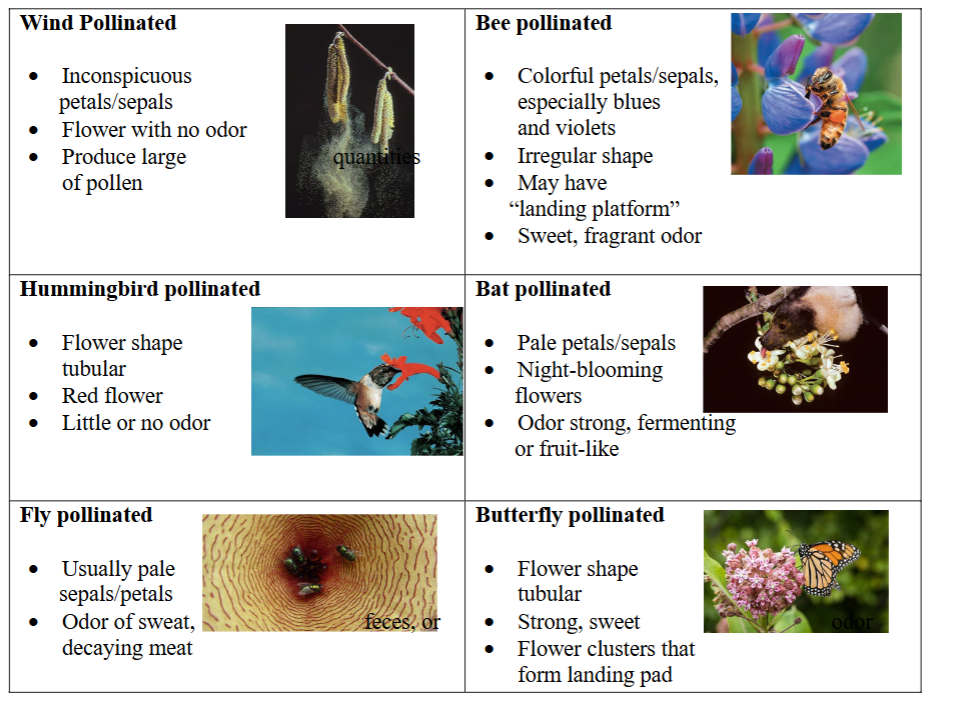
Alternation of Generations
Two phases
Gametophyte (haploid)
Produces gametes
Sporophyte (diploid)
Produces spores
Types of plants we need to know
Non vascular plants
Lack vascular tissue
Relies on water to transport their gametes (sperm)
Gametophyte dominant
Moss (Bryophyta)
Gametophyte dominant
Sporophyte grows in the form of brownish stalks which produce the spores
Liverwort (Hepaticophyta)
Has pores along upper surface for gas exchange
Gemmae cups contain Gemma’s for asexual reproduction
Seedless vascular plants
Vascular tissue (xylem and phloem)
Enables plants to develop the true roots, stems, and leaves
Still depends on water for spreading of gametes
Sporophyte dominant
Lycophyta (club mosses)
Sporophyte dominant
Vascular tissue allows it to stand upright
Possess strobili (cones) which produce spores
Psilotophyta (whisk fern)
Sporophyte dominant
Sporangium located on synangia
Sphenophyta (horsetails)
Sporophyte dominant
Strobili (cones) found at the tips of each stem
Pteridophyte (ferns)
Sporophyte dominant
Individual sporangia typically found on underside of leaves in collections called sori
Spores are formed one it
Sori sometimes covered by an indusium
Gymnosperms (seed plants)
Includes cycadophyta, ginkgophyta, and coniferphyta
Posses seeds
sporophyte dominant
Seeds (female gametes) and pollen (male gametes)
Has protection for reproductive cells
Secondary growth (wood and bark)
Allows plants to grow wider and taller
DON’T HAVE FLOWERS
They have strobili
Cycadophyta (cycads)
Used to be everywhere, not so much in modern times
Have large strobili
Female strobili are more round and squat
Male strobilus are long and elongated
Pollen grains found on/in the cone
Ginkgophyta (ginkgoes)
Only gymnosperm to cycle leaves with the season
Produces large seeds with a fleshy seed coat
Looks like a fruit, but it isn’t
Fleshy seed coat is part of the sporophyte (2n)
The gametophyte within (n) provides nutrition for developing embryo (2n)
Coniferophyta (conifers)
Includes pines, fir, cypresses, junipers, and redwoods
Conifers include the largest and longest lived plants in the world
Have strobili (cones)
Angiosperms (flowering plants)
Seed plants that possess flowers and fruit
Most recent group to evolve
Flowers and fruit allowed for vast expansion of native range
Pollen grains mostly dispersed by pollinators
Anthophyta (flowering Plants)
Flowers have many different structures
Male structure: stamen
Female structure: carpels
Seeds develop within ovary (carpel)
Once seed develops, ovary becomes the fruit of the plant
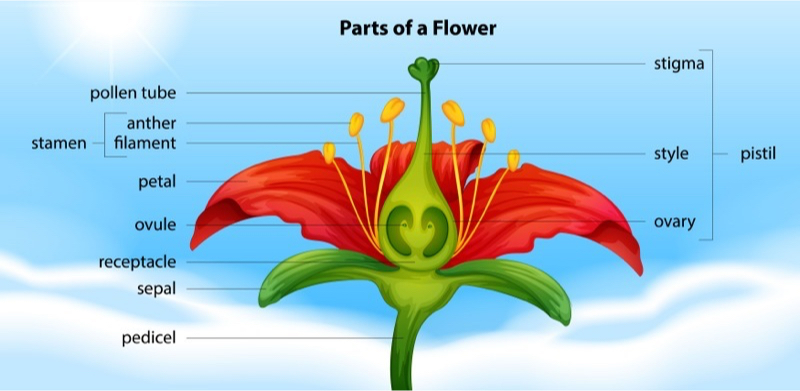
Lab 9: Fungi
Fungi
Main eukaryotic decomposes on the planet
parasitic
Obtains nutrients from living organisms
Saprophytic
Obtains nutrients from dead organisms (most fungi)
Fungal structure
Most of the biomass is in their mats of filaments called mycelia
Individual mycelia filaments are called hyphae
Mycelial morphology allows fungi to grow directly into their food in order to digest it
Hyphae
Most fundamental fungal units
Filamentous strands of cells that can grow to extreme lengths
Each fungal cell has a cell wall made of polysaccharide chitin
Fairy rings
Fungal Feeding
Fungi structure utilize external digestion
Secrete enzymes that break down organic material
Digested food absorbed into the hyphae
Some have specialized enzymes that can break down lignin
These fungi are the primary decomposers of dead wood in terrestrial environments
Fungal Reproduction
Reproduce asexually and sexually
All fungus can reproduce asexually
They are divided into three groups depending on sexual reproduction
Yeast Budding
Yeasts are unusual in that they are unicellular fungi
They reproduce asexually by budding
Used for brewing beer, baking bread
General life cycle of a fungus
They are haploid the whole entire time unless there is a zygote
Fungal Groups
Chytridiomycota
Mucoromycetes (zygomycota)
Basidiomycota
Ascomycota
Mucoromycota (Zygomycota)
Mostly soil dwelling saprophytes
Some zygomycetes are parasites to plants, insects, and small animals
Bread and fruit molds
sexual reproduction
Forms diploid Zygospores in the zygosporangium that will undergo meiosis yielding haploid zygomycete spores
Zygomycota Fungi
Rhizopus
Basidiomycota
Most familiar fungal group
Mainly saprophytic species
Mushrooms, toadstools, puffball, shelf fungi, and rusts
Sexual Reproduction
Formation of specialized club shaped cells called basidium that bear basidiospores
Basidiomycota mushroom photos
Ascomycota
Largest fungal group with 64,000 species
Morels, molds, lichens, truffles, and single called yeasts
Sexual Reproduction
Ascocarp contains ascus
Theses ascus forms ascospores
Ascomycete fungi
Aspergillus
Penicillum
Morel
Lichen
Mutualistic symbiotic relationship between Cyanobacteria or green algae and a fungus
Three growth formations:
Crutose
Crusty
Foliose
Looks like leaves
Fruticose
Looks like shrubs
Mycorrhizal Relationships
Some fungi form mutualistic relationships with plant roots
Plant receives increased surface area of root system for enhanced uptake of water and nutrients
Fungus receives carbs and sugars from the plant
Mycorrhizae come in two forms
ectomycorrhizae
forms a sheath and network around the roots
endomychorrhizae
penetrates root cells
Athlete’s Foot Fungus
Ascomycota foot fungus that usually grows between the tows or on the bottoms of the foot
Causes redness, itchiness, and cracking
Diagnosis confirmed through culturing or seeing hyphae under the microscope
Parasitic Fungus
Can infect living plants
Taphrina deformans
Infects peach trees
Causes leaf curl disease
Anthracnose fungi
Infects sycamore trees
The fungus must infect inside the epidermal cell of the living plant in order to steal nutrients
Killer Fungi
Cordyceps
Genus of parasitic ascomycota
Mind controlling fungi, or zombie fungi
It’s mycelium invades and eventually replaces host tissue
Fruiting body (ascocarp) often sprouting through host tissue
Lab 10: Animal Diversity I (Intro to animals and lophotrochozoans)
Animals
Multicellular Eukaryotes
Heterotrophs (ingest their own food)
Different animal phyla are characterized by the arrangement of their body plans
Body symmetry, # of embryonic tissue layers, presence/absence of a body cavity, patterns of early embryonic development
Animals within the same phylum can be vary from each other even though they may have the same body plan
Species are broadly distributed across a variety of habitats
Types of Body Symmetry
Asymmetry
No plane of symmetry
Radial symmetry
Multiple planets of symmetry
Bilateral symmetry
Single plane of symmetry
Early Embryonic Development Gives Rise to Germ Layers
ectoderm
Gives rise to skin and nervous system
Mesoderm
Becomes muscles, connective tissue, skeleton, kidneys, circularity, and reproductive organs
Endoderm
Cells will form the lining of the gut and major organs derived from it
Animal Body plans
Acoelomate
No coelom, only digestive cavity
Coelom: body cavity
Pseudocoelomate
“Sort of” body cavity
Between mesoderm and endoderm
Also digestive cavity
Eucoelomate
True body cavity
Also digestive cavity
Gametes
Sperm and eggs are produced within the gonads of animals through meiosis
Gonads: Testes and ovaries
Fertilization
Egg (n) and sperm (n) unite to create diploid zygote (2n)
Fertilization membrane forms after the sperm penetrates the egg, preventing other sperm from contacting the now fertilized egg
Internal Vs External Fertilization
Internal Fertilization
Eggs and sperm meet inside the body of one of the parents
Typically female
Females invest more energy into each egg, which limits the number of eggs produced
External Fertilization
Eggs and sperm are dispersed into the medium (air or water) in hopes that they meet and fuse
Gametes and offspring are highly vulnerable to environmental conditions
Energy is invested into production of many small gametes rather than large ones in hopes that at least some eggs are fertilized
Animal Classification
Sponges and cnidarians posses traits of some of the earliest animals on the planet
Remaining phyla are grouped into two categories
Protostomes and deutoerostomes
Sponges
Porifera
No distinct body plan
Lacks tissues, organs, and organ systems
Sessile (immobile) filter feeders
Found on sea floor of intertidal zones, reefs, and the open ocean
They take in food through body and filter out food particles suspended in the surrounding water
Porifera Anatomy
Water enters the sponge through pores called the optimum
Water exits the sponge through the large opening at the tip of the sponge called the osculum
Flagellated cells called collar cells (choanocytes)
Creates a current by beating their flagella, which draws water in through the ostium and out through the osculum
Spicules are structural supports that deter predators
Cnidaria
Coral, Jellyfish, sea anemones
Radial Symmetry
Diploblastic (2 tissue layers)
Ectoderm
Gives rise to skin/body covering
Endoderm
Gives rise to digestive tract
Possess muscle & Nerve tissue
This means they can move
Have tentacles with cnidocytes (stinging cells) that are used to capture prey
Cnidarian Body Plan
Two variations on body plan
Sessile (immobile) polyp
Motile Medusa
Polyps adhere to substrates and extend their tentacles, waiting for prey
Some sea anemones can detach from substrate and swim away
Medusa moves freely in the water via drifting and contractions of bell shaped body
Protostomes
Members of laphotrocgozoa and ecdysozoa gave many unifying features
Undergo Protostomes embryonic development
Have bilateral symmetry
They are symmetrical about one axis
Cephalization
An accumulation of nervous system at the head of the animal
Triploblastic
Have three tissue layers
Ectoderm, endoderm and mesoderm
Mesoderm gives rise to skeleton, blood, muscle, and organs
Functions through organ systems
Two lineages of Protostomes
Lophotrochozoa
Platyhelminthes (flatworms)
Annelida (earthworms)
Ecdysozoans (Lab 11)
Types of Lophotrochozoa
Platyhelminthes
Phylum: Platyhelmintes
Common name: flatworms
3 groups: Free living planarians
Parasitic flukes, parasitic tapeworms
They require a host
Acoelomate
Lacks a true body cavity
Reason why they are flat, not round
Incomplete digestive system
Characterized by gastrovascular cavity
Tapeworms don’t have a digestive system
Nutrients diffuse in through epidermis from their host organism

Annelida
Common name: Segmented worm
3 groups: terrestrial earthworms, freshwater leeches, and marine polychaete worm
Eucoelomate
Coelom acts as a hydrostatic skeleton, cushioning organs, giving them movement
Metameric (segmented)
Body is divided into segments called metameres
Complete, one-way digestive tract
Food enters through the mouth and leaves via butthole
One way tube spans entire body
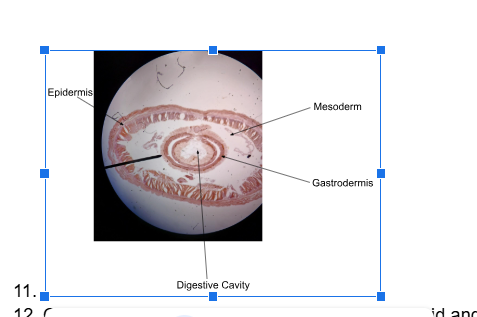
Earthworm dissection
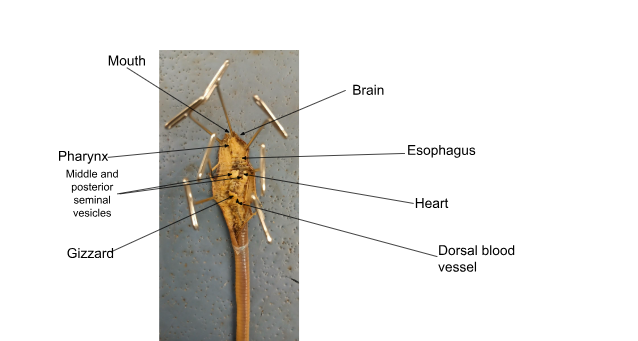
Mollusca
Common Name: Molluscs
4 main groups:
Chitons
Gastropoda
Bivalves
Cephalopods
Eucoelomate
Complete digestive tract
Alimentary canal
Possess a tongue like structure with rows of teeth
Radula
Bivalves don’t have a radula, they filter feed
Squid
Gastropod
Bivalve
Chiton
Lab 11 - Ecdysozoa
Animal Classification
Sponges and cnidarians possess traits of some of the earliest animals on the planet
The remaining phyla are grouped into two categories based on their embryonic development
Protostomes and deuterostomes
ecdysozoa
Nematoda (nematodes)
Arthropoda (insects)
Ecdysozoan protostomes
Grow by molting an exoskeleton
Also called a cuticle
Exoskeleton serves for support and protection
Not composed of living tissue so it can’t grow and expand to fit the organism
Post-Embryonic Development: Incomplete Metamorphosis
Incomplete metamorphosis
Juvenile stages that resemble adults
Differ in size and sexual maturity
Ex: Reptiles and mammals
Post-Embryonic Development: Complete Metamorphosis
Complete Metamorphosis
Organisms undergo dramatic transformations in form and ecology as the move from the juvenile stage to adult stage
Larval→ adult
Ex: Aquatic invertebrates, insects, and amphibians
Nematoda
Nematodes or roundworms
Very small
Free living (found in soil or aquatic habitats)
Also found as parasites with animals and hosts
Caenorhabditis elegans (C. elegans)
Model organism used to study cellular differentiation
Pseudocoelom and complete digestive tract
Not segmented
Arthropoda
Arthropods
Insects, chelicerata (scorpions, spiders), myriapods (centipedes), and crustaceans
Growth by ecdysis
Characterized by jointed limbs
Cuticle made of chitin
Subphylum
Chelicerata
Horseshoe crabs, spiders, ticks, mites, and scorpions
Ancient
2 tagma
Cephalothorax
Abdomen
6 pairs of appendages
1 pair of fanged chelicerae
Feeding, defense, copulation, movement, sensory reception
1 pair of pedipalps
4 pairs of walking legs
Myriapoda
Millipedes and centipedes
2 tagma
Head
Trunk
Paired appendages per trunk segment
Centipedes are carnivorous and often poisonous
Millipedes are detrivores
Feed of dead organic matter
Crustacea
Lobsters, crayfish, shrimp, crabs, water fleas, isopods (wood lice) and barnacles
2 tagma
Cephalothorax
Abdomen
Unique in that they have 2 pairs of antennae
Insects
Beetles, grasshoppers, butterflies, bees, flies, cockroaches, etc
Most abundant and diverse
3 tagma
Head
Thorax
Abdomen
3 pairs of walking legs
Usually have 2 pairs of wings
H
Dissections
Crayfish
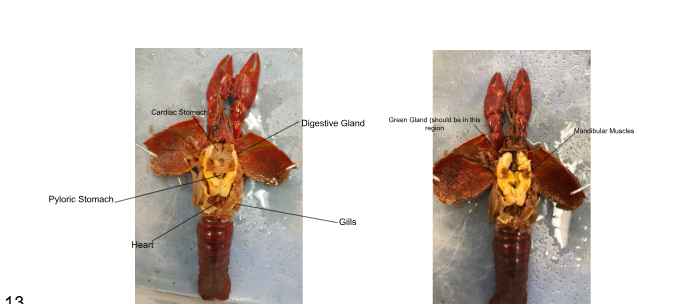
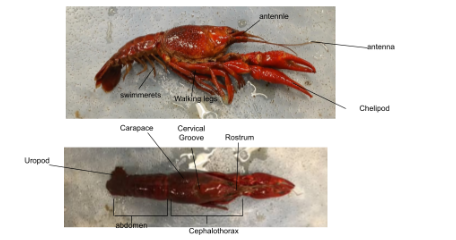
Cricket
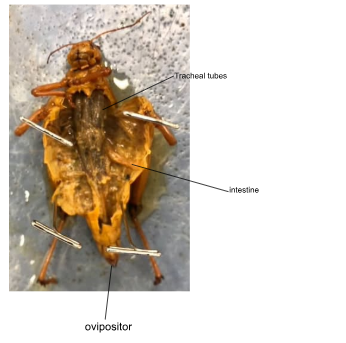
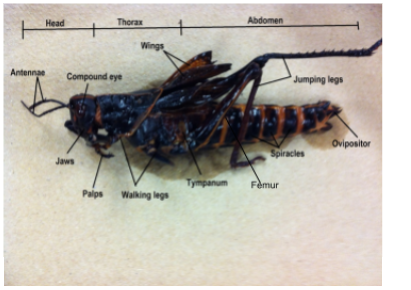
Lab. 12: Deuterostomes
Similarities between protostome and deuterostome
They are eucoelomate
Have a true body cavity
Triploblastic
3 tissue layers (ectoderm, mesoderm, endoderm)
Bilaterally symmetrical
Symmetrical about one body axis
Embryonic Development
Zygote grows through cellular division
Allows for various diploid embryonic stages
Cleavage of zygote exponentially increasing numbers
Solid morula forms
Hollows out to become blastula
Gastrulation occurs and cells migrate to form the three tissue layers
Neurulation leads to development of the nervous system
Difference in protostomes and deuterostomes
In Protostomes
blastopore becomes a mouth first
In deuterostomes
Blastopore becomes anus first
Unifying features of deuterostomes
Radial instead of spiral cleavage
Indeterminate cleavage
Anus forms first
Two groups
Echinodermata
Chordates (includes humans)
Echinodermata
Sea stars, sea urchins, sand dollars, sea cucumbers
As adults, bodies are radially symmetrical
Larval forms are bilaterally symmetrical
Most have spines extending from their body (Projections of internal endoskeleton
Endoskeleton is not bone, Made of calcium carbonate
Water-vascular system used for movement
Series of internal water-filled canals that end in structures called tube feet
Sea star anatomy
You can trace the path of water through the water vascular system
Madreporite → ring canal → radial canals → ampullae → tube feet
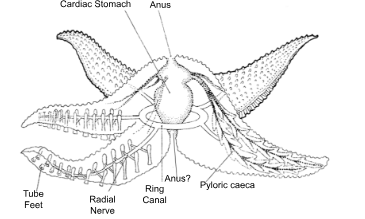
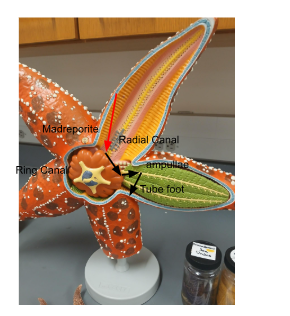
Chordata
Chordates
Defined by 4 key characteristics
Notochord
Forms part of the vertebral column
Dorsal hollow nerve cord
Becomes brain and spinal cord
Pharyngeal gill slits
Become openings to the outside of the body for gas exchange
Only seen in embryonic development for terrestrial vertebrates
Divided into 3 subphyla
Urochordata
Cephalochordata
Vertebrate
Chordata subphylum
Urochordata
Common name: Tunicates
tunicates: sessile (immobile) marine organisms
Ex: sea squirts and slaps
Display all chordate characteristics only in their larval stage
Only have pharyngeal gill slits during adulthood
Cehphalochordata
Common name: Lancelets
small elongated “fish-like” marine invertebrates that lack jaws and sense gains
Adults wriggle into the sand, leaving only its anterior end exposed
They are filter feeders
Vertebrate
Common name: Vertebrate Chordates
Dorsal Hollow nerve chord
Pharyngeal pouches form
Aquatic: open into gill slits → gills
Terrestrial: gill slits do not form after pharyngeal pouches form
Vestigial trait (no function)
Notochord
Forms vertebral column
Surrounds spinal cord
Post-anal tail
Lost in some species
Sub sections of Vertebrae
Jawless fishes
Myxinoidea
Hagfishes
No vertebral column
Has skull
Slime defense mechanism
Lampreys
Skull and vertebral column
Parasitic
Jawed fishes
Chondrichthyes
Cartilaginous fishes (sharks and rays)
Vertebral column made of cartilage (not bone)
Actinopterygii
Ray-finned fishes
Bone
Operculum (bony flap that covers and protects the gills)
Tetrapods
Amphibia
Transitions to land
Aquatic larva
Metamorphosis
Terrestrial adults
Reptilian
Terrestrial (mostly)
Amniotic eggs
Scales
Modified reptiles
Birds
Mammalian
Terrestrial (mostly)
Placenta
Fur
Mammary Glands
Bullfrog Dissection
Rat Dissection
